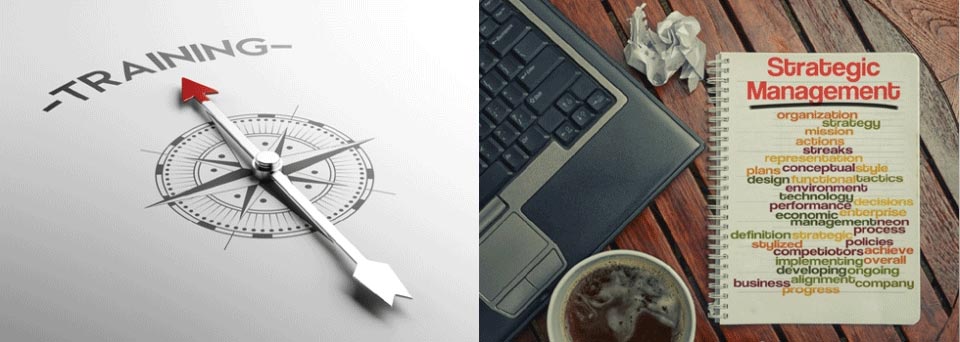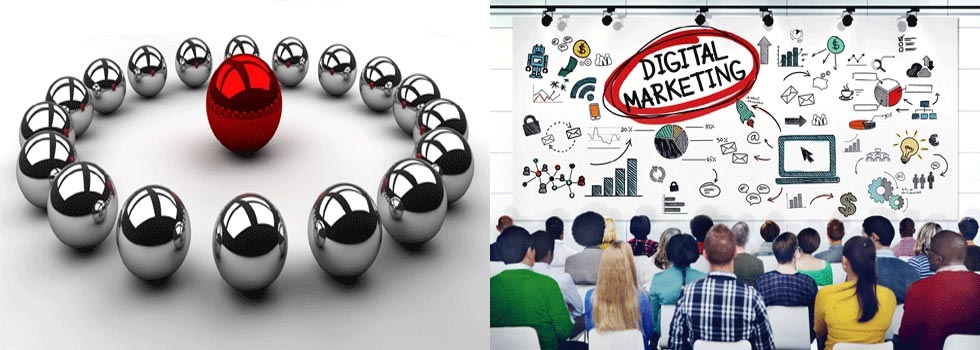Digital Marketing 8
What the hell is the difference between Ad Tech and Marketing Tech?
The difference or the lack of between ad tech and mark tech has never been clear cut. Business consulting provided by a senior Gartner representative has outlined that ad tech focuses on the entire market without differentiating while mark tech is targeted at segmented audience. This definition though has some irregularities caused mainly by the fact that a lot of advertising technology firms were gobbled up by IT giants such as Adobe and Oracle to create aligned marketing solutions services. The use of ad tech applications then ran into mark tech territory and this created major overlap between the two. The ownership of data is another important aspect. The same piece of data can have different uses under the leadership of CTOs, CMOs or CIOs depending on their respective approaches. Thus at present these two fields have converged and the differences are still unclear.
Digital Customer Service is becoming a fully realized Marketing Channel
Customer servicing has historically been a reactive process. The customer approaches the service representatives about the problem which is then addressed by the executives. Now marketing technologies are providing us with data warehousing capabilities which can store enormous amounts of data on customers thus enabling marketers to predict their exact needs. In depth customer knowledge using analytics has now become a critical component of the CRM process. Various marketing channels such as emails, mobile apps, social media and websites facilitate the capture of this vital data. This also allows personalized services to be offered to customers.
The Numbers tell all: The future of e-commerce Marketing is visual, user-generated Content
In the upcoming future, marketing of e-commerce will be generated by visuals and user generated content (UGC). Social media has managed to encourage individual users to get themselves photographed next to experiences they value and share with the wide world. Instagram and Facebook have lent themselves perfectly well to this model. Due to lowered barriers to entry, everyone is today a critic and posting blogs, comments and videos. Marketing research conducted by Forrester, clearly shows that less than a tenth of respondents consider direct ads from companies or banners to be authentic. However, 70% of that same audience considers peer recommendations very highly. Online reviews by other customers are also trusted by about half the market. This trend is giving credence to UGC’s rise as a serious means of marketing.
1 in 4 Consumers open to making purchases via Social Media
It has long been understood that social media forms an important cog in digital marketing. However, now these channels have moved beyond the awareness and brand building part to direct final sales. Facebook has experimented with certain businesses on financial transactions directly via its Messenger app. More than one out of every four respondents in a recent survey confirmed that they are open to making payments via social media channels. So while a larger number of users are currently active in engaging with retailers, the buy button on Facebook is set to transform the industry itself.
Why distinctive Customer Targeting is a smart Strategy
A one-size-fits-all corporate strategy for business may have worked in the past but now is the era of personalized targeting. When former basketball great Magic Johnson was once opening TGIF and Starbucks stores in Los Angeles in the early 1990s, he deviated from norms and innovated based on neighbourhood segmentation. Specialty wines got introduced at some stores for chains unheard of before. Amazon Web Services survived business challenges from industry giants such as Oracle, Google, IBM and Microsoft only because it had found its niche marker. Ford is one of the pioneering organizations for this concept of finding a space for oneself. Starbucks has faced several challenges over the years, not least when fast food chains started exposing its high coffee prices. But Starbucks went back to its core product and emerged stronger from the financial crisis of 2008.
How Internet of Things will change Digital Marketing
The Internet of Things (IoT) is already impacting several business processes across industries but it is set to alter digital marketing in a big way. IoT will enable respective products to move away from being a platform only to actually being able to conduct two-way interactions. A direct communication will be built between customers, sellers and vendors. IoT also enables products to shift ecosystems and thus allowing isolated items to move towards data centres or apps where customer reach is highest. The entire gamut of products can now be personalized to provide service to the consumers. Brand interaction can now be automated without need for third parties.
How Social Media is shaping Financial Services
It is a well known aspect that social media is an integral part of modern day digital marketing efforts. What is less well known however is the fact that social media is also influencing financial services. Online peer to peer lenders such as Lending Club and Prosper are leveraging this tool to reach maximum audience. A study byAccenture has also confirmed that this helps in segmentation and real time marketing while also the acquisition costs reduce. Customer servicing gets a boost as well. Enormous amount of data is generated which fuels research into new product development. Overall costs reduce for marketers as well as final customers. And then this is also spawning several new business models. Some challenges though still exist in this mode. For one, banks remain mired in traditional ways of business. Regulations are still crippling efforts are making this process more inclusive. Social media giants themselves are leveraging their wide reach by entering banking and financial services themselves in process cutting out the traditional players.
How Social Media is going to change your Business Strategies
Social media has been increasingly wedded as a crucial cog in digital marketing efforts. It is now actually changing business strategies in remarkable ways. Due to social media giants such as Facebook, the market scope for individual organizations is global. Desired market can be filtered easily clicking a few buttons only. It enables improved user engagement. Social media also elicits creativity at workplace to get ahead of competitors. Interestingly even competitors can be known of better as they too would have launched social media campaigns that are open for all to view unlike traditional marketing models. Social media creates a sense of convergence where brand appears everywhere increasing awareness among target audience. The right social media strategy can boost business margins eventually realizing substantial revenues.
There’s no Customer Experience without Customer Engagement
Customer experience, engagement and management have been found to be working in triangular formations. The abbreviations CEX, CEM and CRM are incomplete without one another in the present context. Data based business analytics is used by organizations for decision making purposes. Click behaviour of individual users is measured over years. Loyalty programmes are similarly pitched. Social media tools are also geared to gauge this usage pattern. Even GPS is used to enable location tracking that helps retail chains. Predictive algorithm is being increasingly used by organizations. However, all of this is still at relative stage of infancy. This is due to several reasons, one of them being the fear of loss of privacy. Also there aren’t enough sensors around. Crucially while organizations tend to possess treasure troves of data, they aren’t yet aware in which all ways the same may be used. Customer engagement is a continuous process aided by a series of steps. It requires the coordinated integration of various touch points.
Emotional Connection in the Digital Age: How Brands can act Human
In this day and age of digital marketing, brands can leverage online social networks with a more human touch. Companies or brands can be befriended or liked online by the clicking of a single button. Brands then share the same space as authentic friends whose actions and pictures we may like from time to time. Thus brands are occupying a very emotional space and it is thus that it becomes imperative that they display the warmth of human friends. Using Twitter for example, friends can communicate over 140 odd characters even though we may not actually meet that friend for months. It is this gap that brands can bridge by fulfilling such emotional needs of people. Too much exposure though is not desired as it may backfire. This is because social media platforms also become tools for human envy to develop from and this needs to be avoided.
The 4 As of Marketing: What every Marketing leader should Know
A studyconducted has provided us with 4 As which marketers must know of. The first one is Accountability. Just as customers demand transparency from the firm, the organization would expect internal accountability from the marketing team. Then there is Agility which dictates that marketers must be able to seamlessly move between brands, marketing channels and approaches. The marketing objectives must Align with the long term corporate strategy of the organization. Finally there is the Acumen part which involved proficiency in the various marketing strategies of the present times. The marketer must be able to gauge customer insights, evaluate all kinds of analytics, manage customer data and Plan for innovations.
Customer Loyalty in the Digital Age
In earlier times, there were fewer brands and resulting fewer choices for the customers. Thus customers choose the same product repeatedly and this inertia has often been mistaken for loyalty. Presently, there exist plethora of options and customers aren’t sure which one to ignore thus creating a different conundrum. Thus to engage customers, top brands such as Apple, Starbucks, Zara and Forever 21 launch new products much before anticipated time. Starbucks for example allows customers to pre-order before collecting their coffee from the nearest store. Amazon has now moved to bricks-and-mortar store in order to capitalize on their immense digital marketing presence through online stores. Online retailers have realized the importance of physical stores and the overall shopping experience.
Out with the old Email Marketing and in with the new Marketing Automation
The traditional email as a means of digital marketing is not longer clicking. Instead marketing automation is what is giving good results these days. This entails personal engagement and content customization as per needs of present day customers. Automation also enables the entire communications by the firm to be integrated using tools such as Hootsuite or Salesforce. Though the number of leads generated is fewer, they are superior in quality than that thrown up using the older method of mass emailing. Automation even allows marketers to track revenue using data enabled business analytics.
[csblink]




